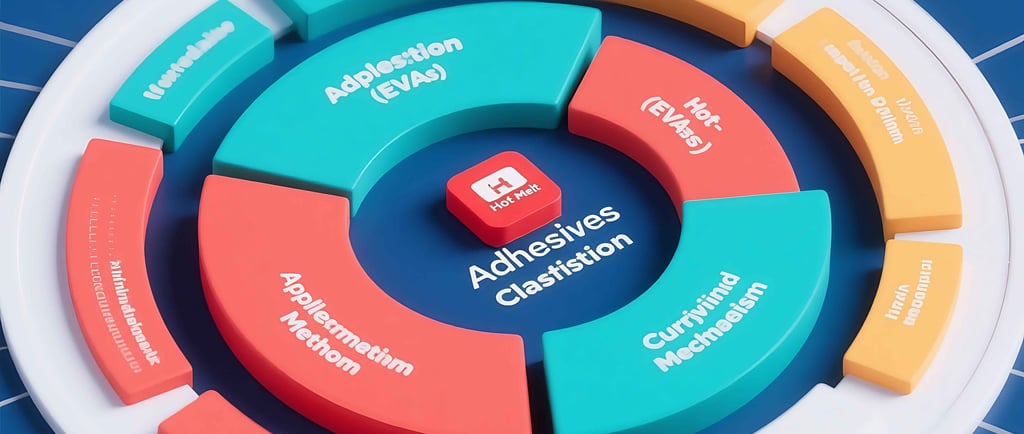The World of Adhesives: Focus on Pressure-Sensitive Types and Their Core Properties
1/15/2019


Adhesives are unsung heroes in manufacturing, construction, and daily life, enabling the bonding of materials from paper to metal. Understanding their classifications and core principles helps unlock their full potential.
What is Adhesion?
Adhesion (or gluing) is the technology of joining homogeneous or heterogeneous surfaces using adhesives. It offers unique advantages:
- Continuous stress distribution across bonded areas
- Lightweight bonds compared to mechanical fasteners
- Sealing capabilities
- Low processing temperatures
- Ideal for connecting different materials, thin components, or complex shapes
From smartphones to skyscrapers, adhesives drive innovation in high-tech industries and enhance everyday products, making their development and production crucial in modern manufacturing.
Illustration of adhesion process showing two materials bonded by adhesive
How Are Adhesives Classified?
Adhesives come in diverse forms, categorized by multiple criteria to suit specific applications:
1. By Application Method
- Thermosetting: Cure through chemical reaction when heated (e.g., epoxy resins).
- Hot Melt: Solid at room temperature, melt when heated for application (e.g., EVA-based adhesives).
- Room-Temperature Curing: Harden without heat, using air or moisture (e.g., certain polyurethanes).
- Pressure-Sensitive: Bond instantly with light pressure (e.g., tape adhesives).
2. By Application Purpose
- Structural Adhesives: Provide strong, durable bonds for load-bearing parts (e.g., epoxies, polyurethanes, silicones).
- Non-Structural Adhesives: Used for temporary or low-stress bonds (e.g., school glue).
- Specialty Adhesives: Designed for unique needs (e.g., high-temperature or chemical-resistant formulas).
3. By Curing Mechanism
- Solvent-Based: Dry as solvents evaporate (e.g., some wood glues).
- Emulsion-Based: Cure as water evaporates from a polymer emulsion (e.g., white glue).
- Reaction-Based: Harden via chemical reactions (e.g., two-part epoxies).
- Hot Melt: Solidify by cooling after melting (e.g., packaging adhesives).
4. By Chemical Composition
Classified by their base polymers, such as acrylics, polyurethanes (PUR), polyvinyl acetate (PVA), or silicones—critical for understanding properties like flexibility or heat resistance.
5. By Main Ingredient
- Organic: Based on carbon-containing compounds (e.g., most synthetic adhesives).
- Inorganic: Made from minerals or metals (e.g., ceramic adhesives for high temperatures).
6. By Appearance
- Liquid: Free-flowing (e.g., epoxy resins).
- Paste: Thick and viscous (e.g., construction adhesives).
- Solid: Films, tapes, or pellets (e.g., hot melt sticks).
7. By Component Count
- Single-Component: Ready to use without mixing (e.g., pressure-sensitive adhesives).
- Two-Component: Require mixing before use (e.g., structural epoxies).
- Reactive: Cure via exposure to air, moisture, or light (e.g., UV-curing adhesives).
Infographic showing different adhesive types categorized by appearance: liquid, paste, and solid
Why Classification Matters
Understanding these categories helps select the right adhesive for the job—whether bonding delicate electronics, building aircraft, or sealing a carton. From everyday uses to industrial innovation, adhesives’ versatility stems from their diverse formulations and properties.
NEWS LETTER
Latest series updates
Exclusive promotion offers
Copyright© 2010-2025 DOMIL. All rights reserved.
Manufactory&Capabilities


Contact
sales01@meltbond.com
+86 75522951009
+86 13008887698
admin@meltbond.com
